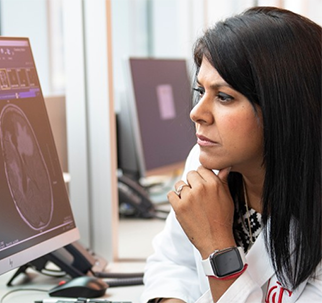Most cancer centers that treat brain tumors use a grading system developed by the World Health Organization. A tumor's grade is determined by looking at cells from the tumor under a microscope. Tumor grading is important because it is one factor that helps doctors decide how to treat a tumor.
Grade I and II tumors are typically considered low grade. They look more normal under the microscope, are less likely to spread, and are easier to treat. Grade III and IV tumors are considered high grade. They grow more quickly and are harder to treat. Over time, some low-grade tumors become high-grade tumors.
Here is more specific information on tumor grades:
- Grade I. These tumors are considered to be benign and slow growing. They may be treated with surgery and they rarely come back. You can often expect long-term survival.
- Grade II. These tumors are considered to be cancer, but they grow slowly. They are less likely to spread. But they may come back after treatment.
- Grade III. These tumors are cancer and tend to spread to other parts of the brain. They may come back as grade IV after treatment.
- Grade IV. These are the most malignant tumors. They grow and spread most rapidly. They are least likely to be cured.
If you or a loved one has been diagnosed with a brain tumor, keep in mind that many new treatments are available. These are leading to longer survival and better quality of life. Treatment will depend on a person's age, overall health, and the tumor type, grade, location, and other factors. Learn as much as you can about brain tumors and work closely with your medical team to find the best treatment.

